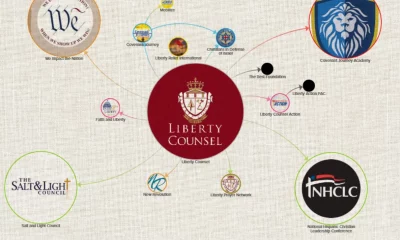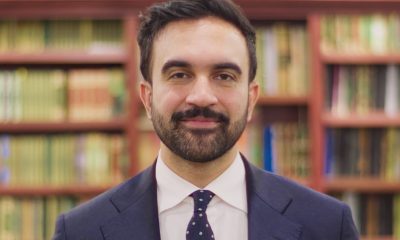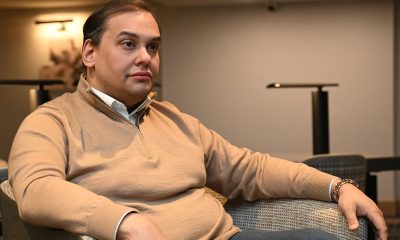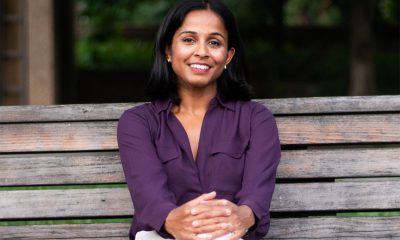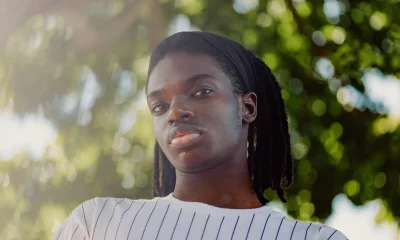Commentary
The war in Gaza impacts all of us and democracy too
ICJ case accuses Israel of committing genocide against Palestinians in enclave.
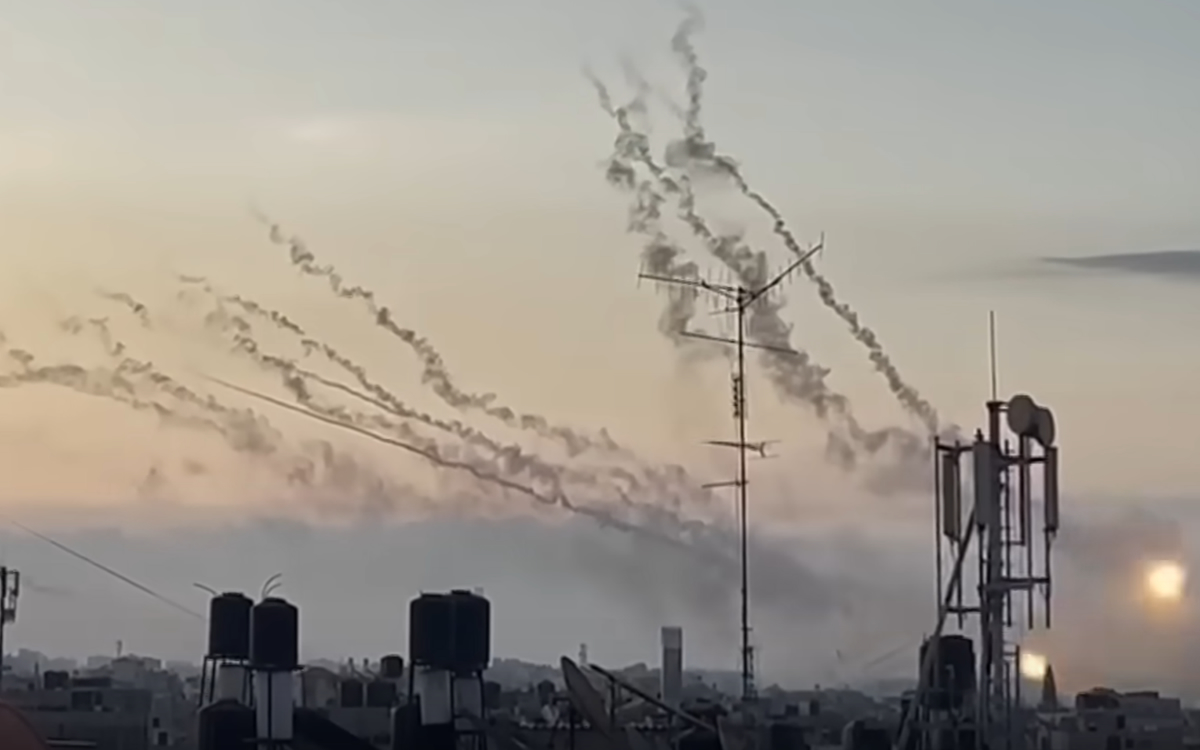
BY JULIE DORF | As a leader in the LGBTQI+ movement and co-chair of the U.S.-based foreign policy organization the Council for Global Equality (CGE), I am calling on my colleagues in the progressive foreign policy community to urgently discuss alternative policy solutions to our government’s support of the deadly war in Gaza and collectively begin demanding solutions that respect the dignity, rights and security for all.
The Council for Global Equality (CGE) works at the intersection of international human rights, U.S. foreign policy and LGBTQI+ communities. We primarily focus on influencing the U.S. government’s policies, programs and foreign assistance to do more good in the world, recognizing that our democracy typically only does the right thing when its citizens demand it — whether through elections or ongoing civic engagement by organizations such as ours. We also recognize that, deservedly or not, the United States wields outsized power in the world; as responsible citizens of this mighty country, it is therefore incumbent on us to actively engage and try to direct its power towards good. Our organizational principles include key tenets such as “freedoms abroad and freedoms at home are linked,” “democracy can only be rooted in secular, inclusive values,” “equal treatment is at the heart of human rights” and “one population’s rights cannot transcend those of another.” The full statement of principles is on our website.
When Hamas launched its terrifying attacks in southern Israel on Oct. 7, followed by Israel’s revengeful response in Gaza, I thought at first that this was not a CGE issue. As a progressive Jew, I was mostly consumed by my own relationship with the ongoing occupation and I feared for my friends in the region. I was horrified and heartsick, glued to Al Jazeera and other news sources. But I was not at all surprised by the attack, except perhaps that it had taken this long for a major uprising by Palestinians. I reached out to activists, friends and family in Israel, Palestine, Lebanon and Egypt. I felt no contradiction being equally upset by the loss of lives on all sides and holding multiple truths at once. Yes, Hamas is a terrorist organization that brutally murdered my people. Yes, Israel has been occupying, persecuting, and actively undermining a Palestinian state for its entire existence. And yes, the government of the United States and its Jewish community have both been enabling this horrible injustice for as long as I can remember. This crisis was just more of the same but on a much, much more painful scale.
My position on Palestine and Israel
I grew up in a staunchly Zionist environment, visited the region multiple times (Israel and the West Bank and Gaza,) and evolved through my human rights career into a proud Jewish anti-Zionist. I believe in the land of Israel being a vital, safe and sacred homeland for Jews and Muslims, as well as for Christians, Druze, Armenians, Samaritans and others.
I do not, however, believe in a Jewish supremacist state, which is the way that Israel’s current policies have been constructed, believing that only by having a majority of Jews in the country of Israel can it be a secure Jewish “homeland.” I believe it can and must be a secure homeland for different religions simultaneously. Indeed, if you’ve ever visited Jerusalem, you know it already is a homeland for Jews, Christians, Muslims and Armenians (albeit not safe.) Yes, Netanyahu is perhaps the most far-right authoritarian leader we’ve seen in Israel. But long-time policies from urban development, road construction and water to the separation wall and vast numbers of political prisoners, and other Israeli government policies have been constructed to maintain the supreme rights of Jews over Palestinians. These policies that are intended to maintain inequality by ethnicity are simply inherently incompatible with a genuine democracy. At this moment in the world, when democracy needs to be actively defended in so many countries, an exception clause for Israel is both indefensible and counterproductive.
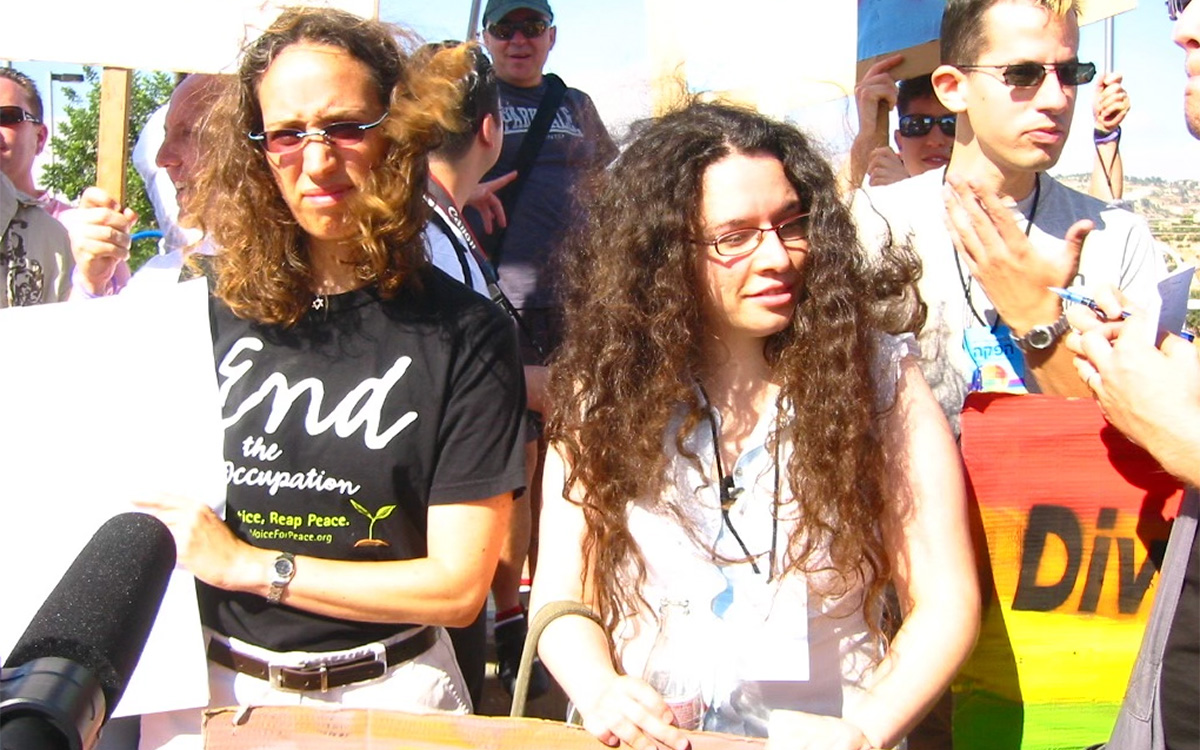
My political positions on Israel and Palestine have stirred up great pain and conflict in my family and community. But I have been committed to talking to my own people — in this case, American Jews — about these issues because that is where I can have the most influence to make change, however small that may be. Many progressive Jews — and particularly younger generations — share my beliefs but are afraid of being ostracized from their Jewish communities or families or being labeled a “self-hating Jew.” I know that I am a proud Jew.
Antisemitism and anti-Zionism
I am also no stranger to antisemitism — even working in the LGBTQI+ global movement, I have experienced my share of antisemitism. It mostly takes the form of microaggressions, such as comments about “your banker friends in New York” or “I won’t succumb to your Jewish guilt moves.” Then there was the moment when a presenter at a queer conference on closing civic space in Poland used a political cartoon from a local newspaper that had a picture of an Orthodox Jew with a huge nose, wearing a Star of David that said “NGO” on it — but didn’t recognize that NGO was overlaid on a profoundly antisemitic image. Or the time when someone posted a conspiracy theory full of lies that “co-religionist George Soros” was somehow connected West Bank settlement building on a large global queer listserv, and the moderator of the list told me that my concerns were unfounded and that “the post was not antisemitic.” And I’ll definitely never forget when an activist in Malaysia who had never met a Jew before asked to feel my head for my horns. At least they asked for consent!
Today’s genuine rise in antisemitism around the world is more overt and scary. I’m used to armed security guards at the entrances to Jewish institutions such as our schools, museums and synagogues to guard against the occasional violent act of antisemites. But this increased level of hate speech, online antisemitism, Nazis in public and murder threats are understandably terrifying my community. This is precisely why the distinction between this very real rise in antisemitic violence and anti-Zionist expression is critical to distinguish.
It is dangerous for Jews and others to conflate antisemitism with anti-Zionism because that conflation misdirects attention from genuine antisemitic violent threats and increases polarization in a year when our unity to protect democracy is more important than ever. Further, it is terrible for the freedom of thought and speech, undermining legitimate calls for justice for Palestinians and silencing people from expressing their true thoughts and reactions. All these things are harming U.S. foreign policy and making U.S. citizens less safe.
We can agree to disagree about the connotations of “from the river to the sea” or the word “intifada,” but it is not inherently antisemitic to wish for equality in that location or to desire a one-state solution to the conflict between the state of Israel and the stateless citizens of Palestine or to wish to organize peaceful resistance to oppression (such as the boycott, divestment and sanctions movement.) This is legitimate political discourse, essential to finding a peaceful solution to this ongoing conflict, whether that be a one-state, two-state, confederated or some other solution we haven’t yet imagined.

Further complicating matters, progressives tend to minimize antisemitism because of Ashkenazi white skin privilege and class privilege, whether real or imagined. Yet Eastern European Jews weren’t considered “white” for many decades, Sephardic Jews are still not considered “white,” and there is increasing visibility of Jews of color. Regardless of the color of our skin, we’ve not been part of any dominant culture for most of our existence as a people — until the creation of the Israeli state. But in the current leftist paradigm of “settler colonialism” as it applies to the State of Israel (which is, in fact, what the early founders of Israel called themselves), often the role of historical and current antisemitism is either dismissed or ignored. This is problematic and limits solidarity. It adds to the lopsided empathy that occurs in both directions and limits civil discourse and healing.
There is no doubt that antisemitism over time, and particularly the Holocaust, played a critical role in the creation of the state of Israel, as well as in the historical trauma and epigenetic fears that live inside so many of us Jews. That trauma was further inflamed by Hamas’ attack on Oct. 7, just as the trauma of the Nakba was reignited for Gazans when Israel’s counter-attacks began and 90 percent of Gazans were forced to leave their homes, regularly going without food. It might seem obvious that this sense of collective victimhood does not give license to victimize others, but it certainly creates a major blind spot in Jewish identity. It is overdue for Jews around the world — and especially in Israel — to update our story and live up to our stated values as a people committed to “Tikkun Olam,” or to repair the world. As painful as it is, we must take a hard look at the missteps in the history of Israel and rectify them urgently. We must face the current crisis and rise in antisemitism with the clarity that anti-Zionism is not synonymous with antisemitism. We must also be able to sit with the discomfort or sense of threat from anti-Zionist arguments or even chants, or genuine discourse about a different role for the U.S. vis-à-vis Israel, rather than reflexively labeling all of that antisemitic.
Legitimacy in global movements
So, when activists in the Middle East began asking queer groups to show up in solidarity with Palestine and, in particular, to join the calls for a ceasefire, I had no problem as a co-chair of CGE to craft a statement on behalf of our organization. It was not only consistent with our stated principles, but it was also a question of legitimacy for us in our global movement. What so many Americans do not quite understand is that much of the world considers Israel a pariah state; as such, the “special relationship” the United States maintains with a country considered akin to apartheid South Africa is very hard to explain or defend. Yet here in the United States, we get a totally different perspective, highly influenced by the commercial media, by mainstream Jewish community institutions (many of which are quite out of step with their own constituents, particularly younger people) and also by the strong forces of the intensely Zionist Christian right (Did you know that Christians United for Israel has more members than AIPAC?) And perhaps, as Peter Beinart posits, as Americans, we identify unconsciously with Israelis because we, too, do not wish to rectify our past treatment of Native Americans in our own founding of our country. This creates a grossly asymmetrical empathy for the “Israeli side” (which, by the way, is hardly monolithic) for many in the United States.
Yet, for many of us in the fields of international human rights, global development, or foreign policy, we engage regularly with colleagues outside of the United States who have a more balanced concern for the Palestinians. Indeed, we cannot do our work very effectively without such solidarity and trusted relationships. Consequently, it is very difficult to sustain an organizational position that justifies the levels of U.S. aid to Israel (over $3B annually,) particularly the extra $14.5B in military aid for their war on Gaza, some of it circumventing required congressional notifications, which everyone knows by now has overwhelmingly killed civilians and children and over 20,000 people. Then to see that with the U.S. government’s enormous investment, the Israeli military and intelligence could be so arrogantly incompetent, caught without any plan or reasonable response to the Oct. 7 Hamas attacks, makes that incredibly large investment even more questionable. And yet, most D.C. organizations still simply shy away from this issue.
Pinkwashing and impact on the LGBTQI+ movement
For the global LGBTQI+ movement, “pinkwashing” has further enraged many in queer communities across the globe. Pinkwashing is the promotion by the Israeli government (or any other government) of its pro-LGBTQI+ policies to intentionally distract from its human rights abuses against Palestinians (or other horrific rights abuses.) In truth, all the rights that have been disingenuously touted by the Israeli government to show a contrast to surrounding Arab states in the region were hard-fought and won by the country’s LGBTQI+ community itself through the courts, not simply handed to the community by the State of Israel. This has been a key part of the intentional campaign by the Israeli government to maintain an image that the country is more similar to Western democracies and, therefore, more deserving of their support.
But in many ways, it has backfired when it comes to LGBTQI+ communities and certainly alienated Israeli LGBTQI+ civil society from the global movement, and in particular from other LGBTQI+ organizations in the region. It is considered so taboo to be connected to Israel that no other Middle East or North Africa (MENA) representatives would show up to a queer MENA event if Israeli civil society were even invited. (And, yes, there are LGBTQI+ groups large and small in Jordan, Lebanon, Iraq, Iran, Tunisia, Morocco, etc.) Israel’s pinkwashing also helped spawn stronger queer support for Palestinians and for the BDS movement. A clear example of this pinkwashing continues now during the war, when the State of Israel’s official X (formerly Twitter) account showed an IDF soldier unfurling a rainbow flag in front of a tank in Gaza and another one, claiming to be “in the name of love,” in front of a destroyed village. For many of us, this was beyond offensive, it was stomach-churning.
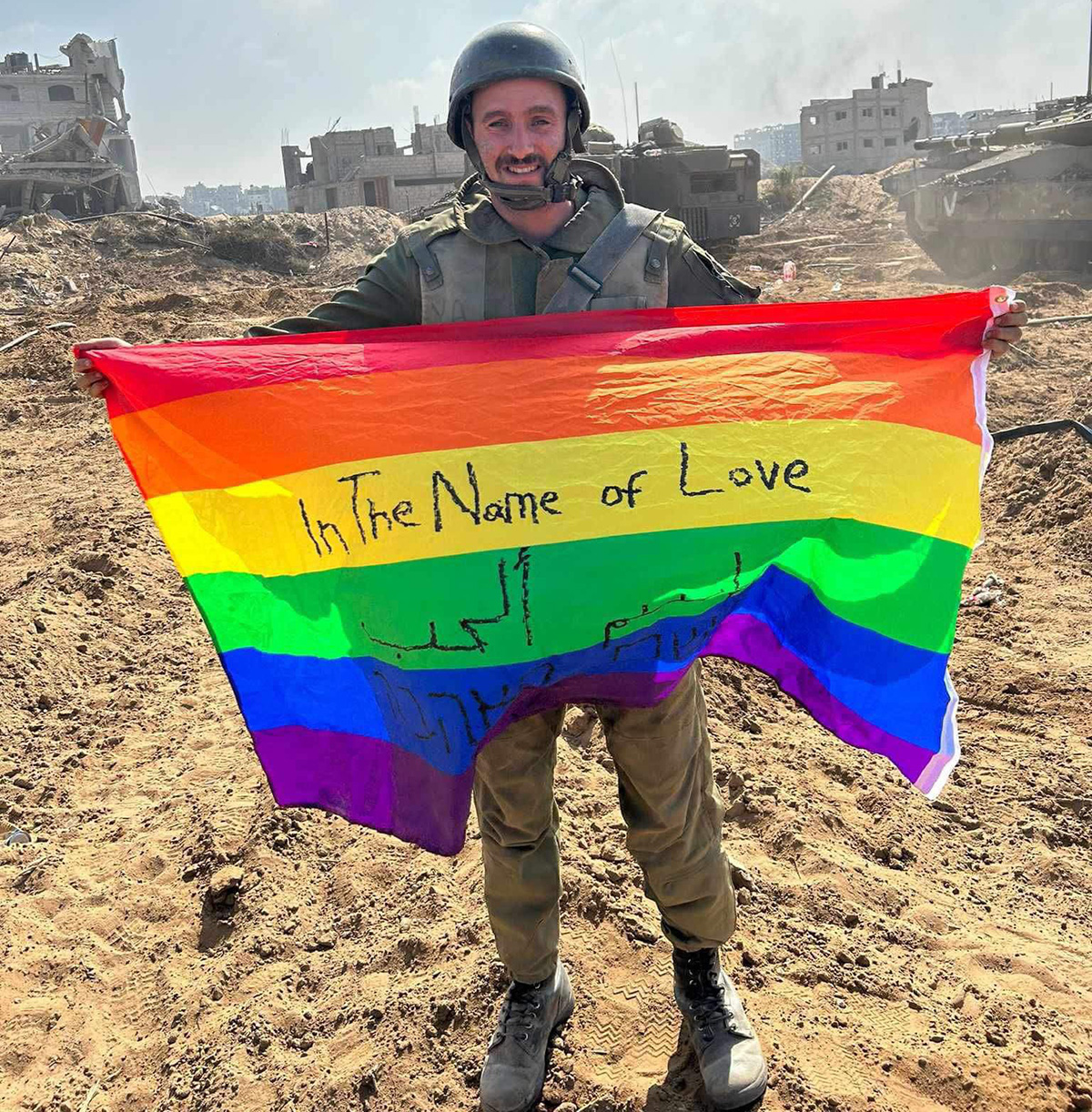
For all of these reasons, CGE issued our statement calling for a ceasefire in late October. Most of our organizational members were very pleased with its release, except for the ADL, which chose to end its membership in CGE over our differences on this issue. Human Rights Watch and Amnesty International, both long-standing CGE members, have strongly criticized this war, documenting war crimes and other human rights violations, both by the Israeli state against Palestinian civilians and by Hamas against Israeli citizens. But other than those large human rights organizations, the most vocal members of the foreign policy community in Washington have been the large humanitarian assistance providers, which have passionately argued for a ceasefire. The visible resistance by Jewish Voice for Peace and other progressive Jewish organizations, together with Palestinian rights organizations, have been the primary other civil society entities articulating a different vision for U.S. policy on Israel and Palestine. Between the street protests, potentially losing the next generation’s vote, and the upset from federal employees themselves, this does seem to be getting the Biden-Harris administration’s attention, forcing very small shifts toward using its leverage to reign in Israel’s military violence.
Where is the US foreign policy community?
So, where is the rest of the Washington foreign policy community? Clearly, others must have similar concerns for their credibility with partners around the world during this crisis and feel uneasy every day as the news appears. How can we not do better than this to hold our government accountable to our values of equality and justice? Where are the media watchdog organizations and why are they not challenging such asymmetrical coverage of the war? I understand that people are scared to “take a side,” to offend someone, to lose big donors and to lose legitimacy in the eyes of our U.S. government allies. God forbid we get canceled by saying the wrong thing or making a mistake.
But we must do better than that; we must have the courage to advocate for a more balanced U.S. policy on Israel and Palestine and to call on the Biden administration to be a more honest broker in the conflict. If foreign policymakers believe that the United States needs to be Israel’s best friend, to be a trusted nation they will listen to, then we certainly have paid our dues by now. We must leverage decades of expensive investments more strategically and effectively.
It is time for the progressive foreign policy community in the United States, together with principled Jewish organizations, Palestinian leaders and others sincerely invested in peace to come together to articulate a better way forward for U.S. foreign policy. We must demand conditions on U.S. aid, not just on ending illegal settlement building in the West Bank, but on actually dismantling settlements if the U.S.-stated policy goal of helping to create a Palestinian state is sincere. We must condition military aid appropriately to avoid its use in war crimes. We must demand and help secure the release of Palestinian leaders in Israeli prisons who could become the more legitimate, moderate leaders of the next iteration of the Palestinian Authority. This would undermine the Hamas movement far more effectively than the current military campaign is doing by offering better leadership options. We must demand the release of the Israeli hostages in Gaza and the Palestinian political prisoners in Israel. And we must end the immense blank check support of billions of taxpayer dollars to Israel by requiring a genuine restart of peace negotiations. These are just some of the policies that we should be advocating for – the point is that we need to have those debates as a matter of urgency within our own foreign policy communities in Washington.
As an LGBTQI+ U.S. foreign policy organization, we should be a part of those discussions, not just because queer Palestinians and queer Israelis are impacted, and not just because it’s urgently critical for the safety of all Palestinians and Israelis, but because, indeed, we are all impacted. Americans will be safer. Jews will be safer. Democracy might even be safer.
Julie Dorf is the co-chair of the Council for Global Equality.
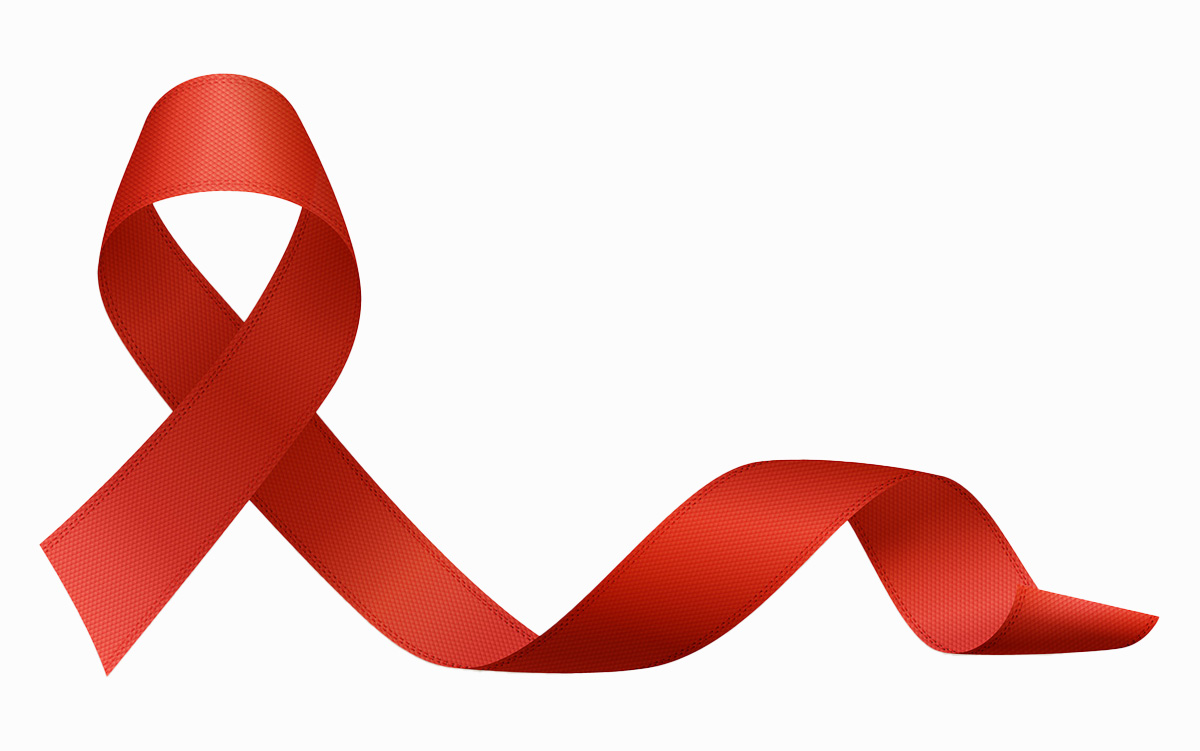
Today, on World AIDS Day, we honor the resilience, courage, and dignity of people living with HIV everywhere especially refugees, asylum seekers, and queer displaced communities across East Africa and the world.
For many, living with HIV is not just a health journey it is a journey of navigating stigma, borders, laws, discrimination, and survival.
Yet even in the face of displacement, uncertainty, and exclusion, queer people living with HIV continue to rise, thrive, advocate, and build community against all odds.
To every displaced person living with HIV:
• Your strength inspires us.
• Your story matters.
• You are worthy of safety, compassion, and the full right to health.
• You deserve a world where borders do not determine access to treatment, where identity does not determine dignity, and where your existence is celebrated not criminalized.
Let today be a reminder that:
• HIV is not a crime.
• Queer identity is not a crime.
• Seeking safety is not a crime.
• Stigma has no place in our communities.
• Access to treatment, care, and protection is a human right.
As we reflect, we must recommit ourselves to building systems that protect not punish displaced queer people living with HIV. We must amplify their voices, invest in inclusive healthcare, and fight the inequalities that fuel vulnerability.
Hope is stronger when we build it together.
Let’s continue to uplift, empower, and walk alongside those whose journeys are too often unheard.
Today we remember.
Today we stand together.
Today we renew hope.
Abraham Junior lives in the Gorom Refugee Settlement in South Sudan.
Commentary
Perfection is a lie and vulnerability is the new strength
Rebuilding life and business after profound struggles

I grew up an overweight, gay Black boy in West Baltimore, so I know what it feels like not to fit into a world that was not really made for you. When I was 18, my mother passed from congestive heart failure, and fitness became a sanctuary for my mental health rather than just a place to build my body. That is the line I open most speeches with when people ask who I am and why I started SWEAT DC.
The truth is that little boy never really left me.
Even now, at 42 years old, standing 6 feet 3 inches and 225 pounds as a fitness business owner, I still carry the fears, judgments, and insecurities of that broken kid. Many of us do. We grow into new seasons of life, but the messages we absorbed when we were young linger and shape the stories we tell ourselves. My lack of confidence growing up pushed me to chase perfection as I aged. So, of course, I ended up in Washington, D.C., which I lovingly call the most perfection obsessed city in the world.
Chances are that if you are reading this, you feel some of that too.
D.C. is a place where your resume walks through the door before you do, where degrees, salaries, and the perfect body feel like unspoken expectations. In the age of social media, the pressure is even louder. We are all scrolling through each other’s highlight reels, comparing our behind the scenes to someone else’s curated moment. And I am not above it. I have posted the perfect photo with the inspirational “God did it again” caption when I am feeling great and then gone completely quiet when life feels heavy. I am guilty of loving being the strong friend while hating to admit that sometimes I am the friend who needs support.
We are all caught in a system that teaches us perfection or nothing at all. But what I know for sure now is this: Perfection is a lie and vulnerability is the new strength.
When I first stepped into leadership, trying to be the perfect CEO, I found Brené Brown’s book, “Daring Greatly” and immediately grabbed onto the idea that vulnerability is strength. I wanted to create a community at SWEAT where people felt safe enough to be real. Staff, members, partners, everyone. “Welcome Home” became our motto for a reason. Our mission is to create a world where everyone feels confident in their skin.
But in my effort to build that world for others, I forgot to build it for myself.
Since launching SWEAT as a pop up fundraiser in 2015, opening our first brick and mortar in 2017, surviving COVID, reemerging and scaling, and now preparing to open our fifth location in Shaw in February 2026, life has been full. Along the way, I went from having a tight trainer six pack to gaining nearly 50 pounds as a stressed out entrepreneur. I lost my father. I underwent hip replacement surgery. I left a relationship that looked fine on paper but was not right. I took on extra jobs to keep the business alive. I battled alcoholism. I faced depression and loneliness. There are more stories than I can fit in one piece.
But the hardest battle was the one in my head. I judged myself for not having the body I once had. I asked myself how I could lead a fitness company if I was not in perfect shape. I asked myself how I could be a gay man in this city and not look the way I used to.
Then came the healing.
A fraternity brother said to me on the phone, “G, you have to forgive yourself.” It stopped me in my tracks. I had never considered forgiving myself. I only knew how to push harder, chase more, and hide the cracks. When we hung up, I cried. That moment opened something in me. I realized I had not neglected my body. I had held my life and my business together the best way I knew how through unimaginable seasons.
I stopped shaming myself for not looking like my past. I started honoring the new ways I had proven I was strong.
So here is what I want to offer anyone who is in that dark space now. Give yourself the same grace you give everyone else. Love yourself through every phase, not just the shiny ones. Recognize growth even when growth simply means you are still here.
When I created SWEAT, I hoped to build a home where people felt worthy just as they are, mostly because I needed that home too. My mission now is to carry that message beyond our walls and into the city I love. To build a STRONGER DC.
Because strength is not perfection. Strength is learning to love an imperfect you.
With love and gratitude, Coach G.
Gerard Burley, also known as Coach G, is a D.C.-based fitness entrepreneur.
Commentary
Elusive safety: what new global data reveals about gender, violence, and erasure
Movements against gender equality, lack of human rights data contributing factors.
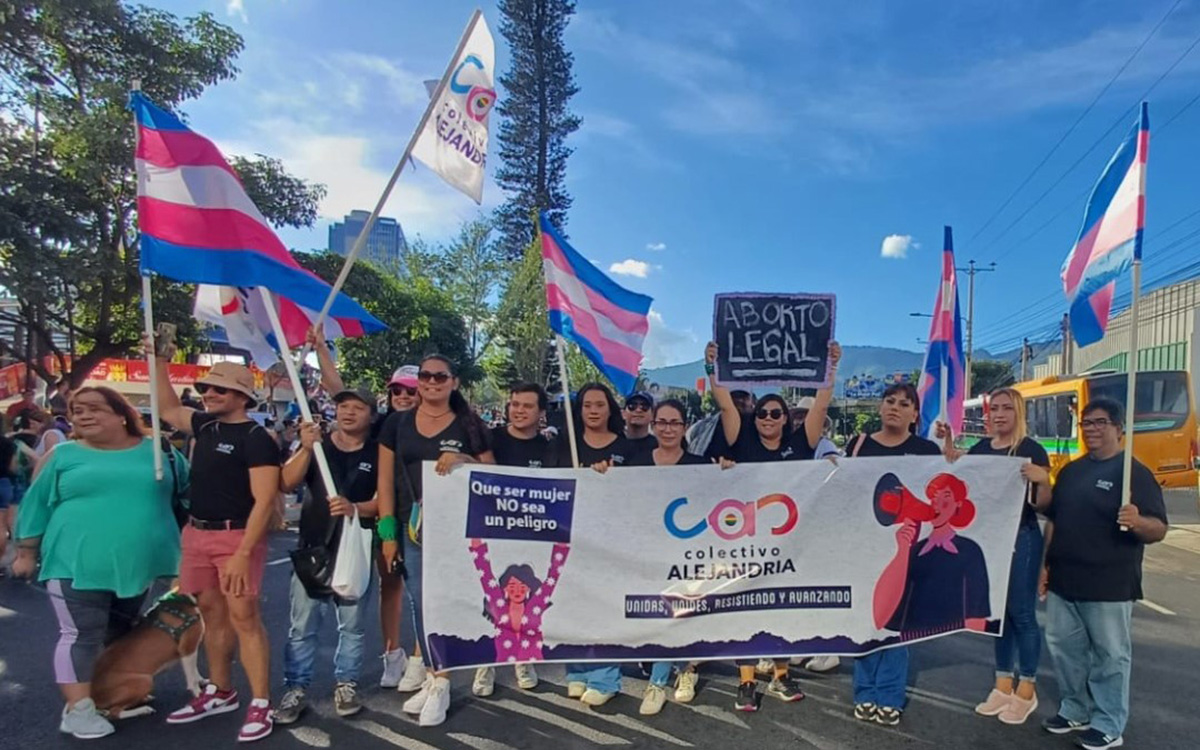
“My identity could be revealed, people can say whatever they want [online] without consequences. [Hormone replacement therapy] is illegal here so I’m just waiting to find a way to get out of here.”
-Anonymous respondent to the 2024 F&M Global Barometers LGBTQI+ Perception Index from Iraq, self-identified as a transgender woman and lesbian
As the campaign for 16 Days Against Gender-Based Violence begins, it is a reminder that gender-based violence (GBV) — both on– and offline — not only impacts women and girls but everyone who has been harmed or abused because of their gender or perceived gender. New research from the Franklin & Marshall (F&M) Global Barometers and its report A Growing Backlash: Quantifying the Experiences of LGBTQI+ People, 2022-2024 starkly show trends of declining safety among LGBTQI+ persons around the world.
This erosion of safety is accelerated by movements against gender equality and the disappearance of credible human rights data and reporting. The fight against GBV means understanding all people’s lived realities, including those of LGBTQI+ people, alongside the rights we continue to fight for.
We partnered together while at USAID and Franklin & Marshall College to expand the research and evidence base to better understand GBV against LGBTQI+ persons through the F&M Global Barometers. The collection of barometers tracks the legal rights and lived experiences of LGBTQI+ persons from 204 countries and territories from 2011 to the present. With more than a decade of data, it allows us to see how rights have progressed and receded as well as the gaps between legal protections and lived experiences of discrimination and violence.
This year’s data reveals alarming trends that highlight how fear and violence are, at its root, gendered phenomena that affect anyone who transgresses traditional gender norms.
LGBTQI+ people feel less safe
Nearly two-thirds of countries experienced a decline in their score on the F&M Global Barometers LGBTQI+ Perception Index (GBPI) from 2022-2024. This represents a five percent drop in global safety scores in just two years. With almost 70 percent of countries receiving an “F” grade on the GBPI, this suggests a global crisis in actual human rights protections for LGBTQI+ people.
Backsliding on LGBTQI+ human rights is happening everywhere, even in politically stable, established democracies with human rights protections for LGBTQI+ people. Countries in Western Europe and the Americas experienced the greatest negative GBPI score changes globally, 74 and 67 percent, respectively. Transgender people globally reported the highest likelihood of violence, while trans women and intersex people reported the highest levels of feeling very unsafe or unsafe simply because of who they are.
Taboo of gender equality
Before this current administration dismantled USAID, I helped create an LGBTQI+ inclusive whole-of-government strategy to prevent and respond to GBV that highlighted the unique forms of GBV against LGBTQI+ persons. This included so-called ‘corrective’ rape related to actual or perceived sexual orientation, gender identity, or expression” and so-called ‘conversion’ therapy practices that seek to change or suppress a person’s gender identity or expression, sexual orientation, or sex characteristics. These efforts helped connect the dots in understanding that LGBTQI+ violence is rooted in the same systems of inequality and power imbalances as the broader spectrum of GBV against women and girls.
Losing data and accountability
Data that helps better understand GBV against LGBTQI+ persons is also disappearing. Again, the dismantling of USAID meant a treasure trove of research and reports on LGBTQI+ rights have been lost. Earlier this year, the US Department of State removed LGBTQI+ reporting from its annual Human Rights Reports. These played a critical role in providing credible sources for civil society, researchers, and policymakers to track abuses and advocate for change.
If violence isn’t documented, it’s easier for governments to deny it even exists and harder for us to hold governments accountable. Yet when systems of accountability work, governments and civil society can utilize data in international forums like the UN Universal Periodic Review, the Convention on the Elimination of All Forms of Discrimination Against Women, and the Sustainable Development Goals to assess progress and compliance and call for governments to improve protections.
All may not be lost if other countries and donors fill the void by supporting independent data collection and reporting efforts like the F&M Global Barometers and other academic and civil society monitoring. Such efforts are essential to the fight against GBV: The data helps show that the path toward safety, equality, and justice is within our reach if we’re unafraid of truth and visibility of those most marginalized and impacted.
Jay Gilliam (he/him/his) was the Senior LGBTQI+ Coordinator at USAID and is a member of the Global Outreach Advisory Council of the F&M Global Barometers.
Susan Dicklitch-Nelson (she/her/hers) is the founder of the F&M Global Barometers and Professor of Government at Franklin & Marshall College.
-

 Congress3 hours ago
Congress3 hours agoEXCLUSIVE: George Santos speaks out on prison, Trump pardon, and more
-

 The White House4 days ago
The White House4 days agoTrump’s shocking East Wing amputation—and the painful fallout Americans won’t ignore
-

 District of Columbia4 days ago
District of Columbia4 days agoThird LGBTQ candidate running for Ward 1 D.C. Council seat
-

 Health3 days ago
Health3 days agoThe harsh truth about HIV phobia in gay dating

